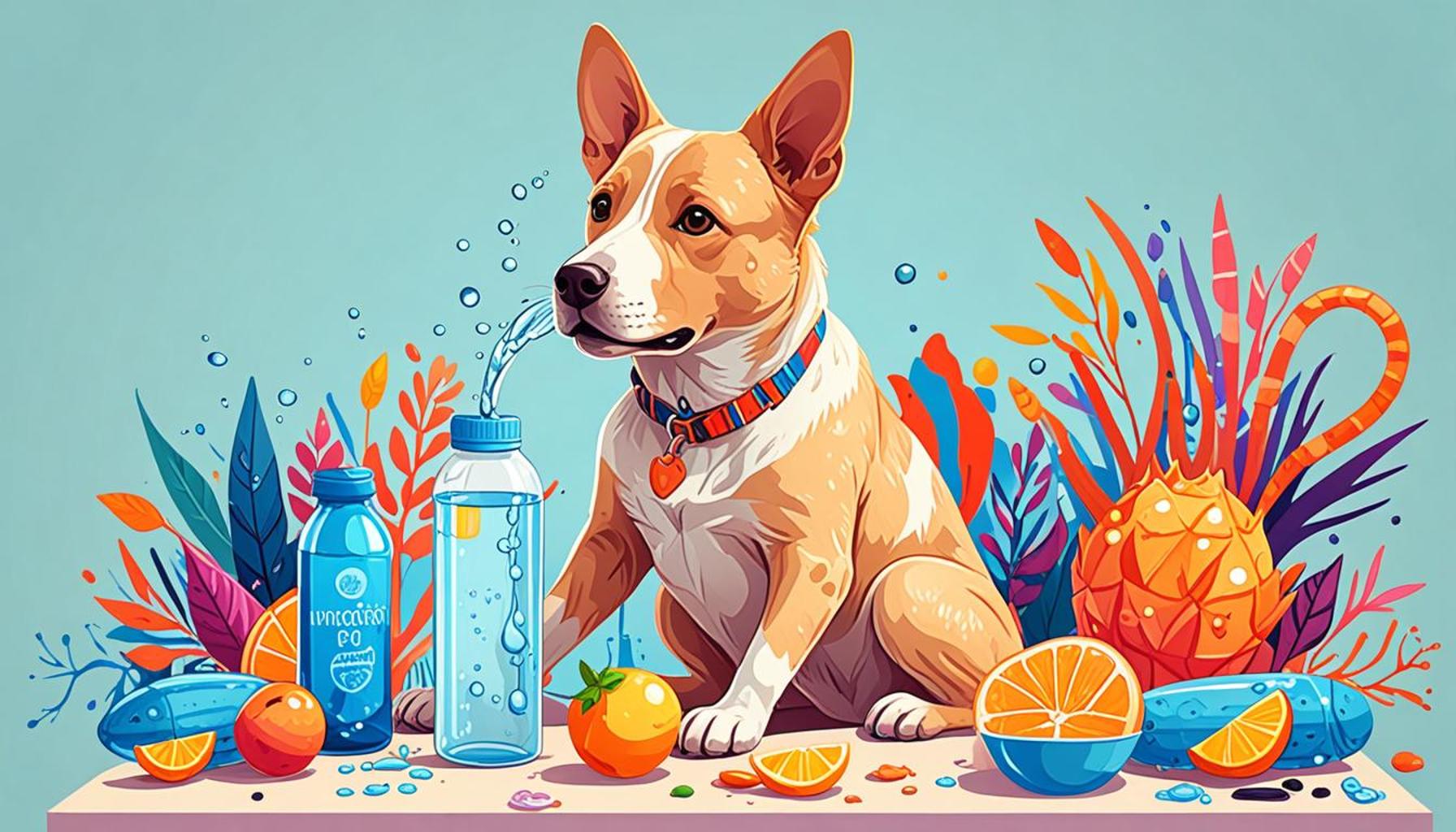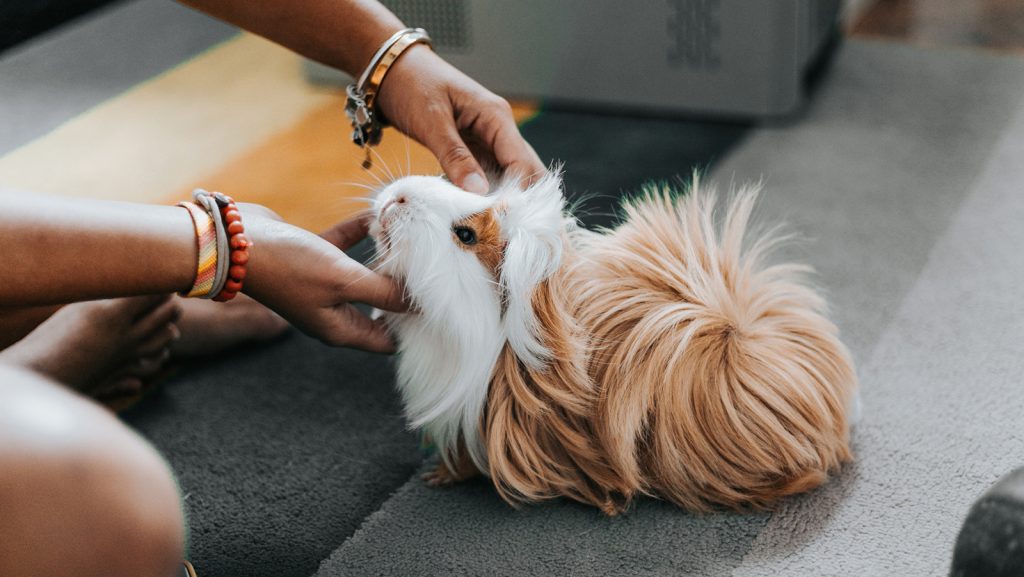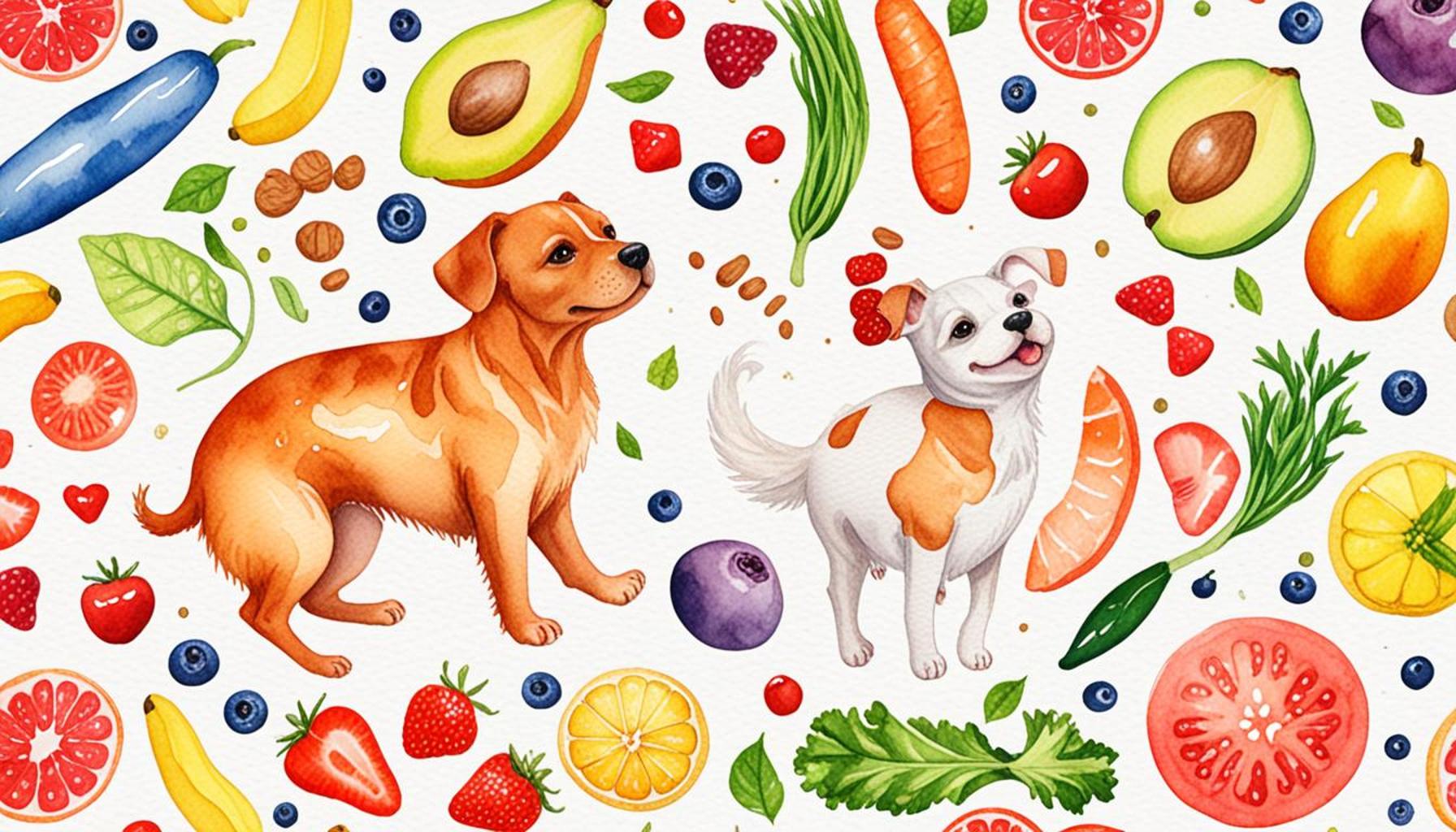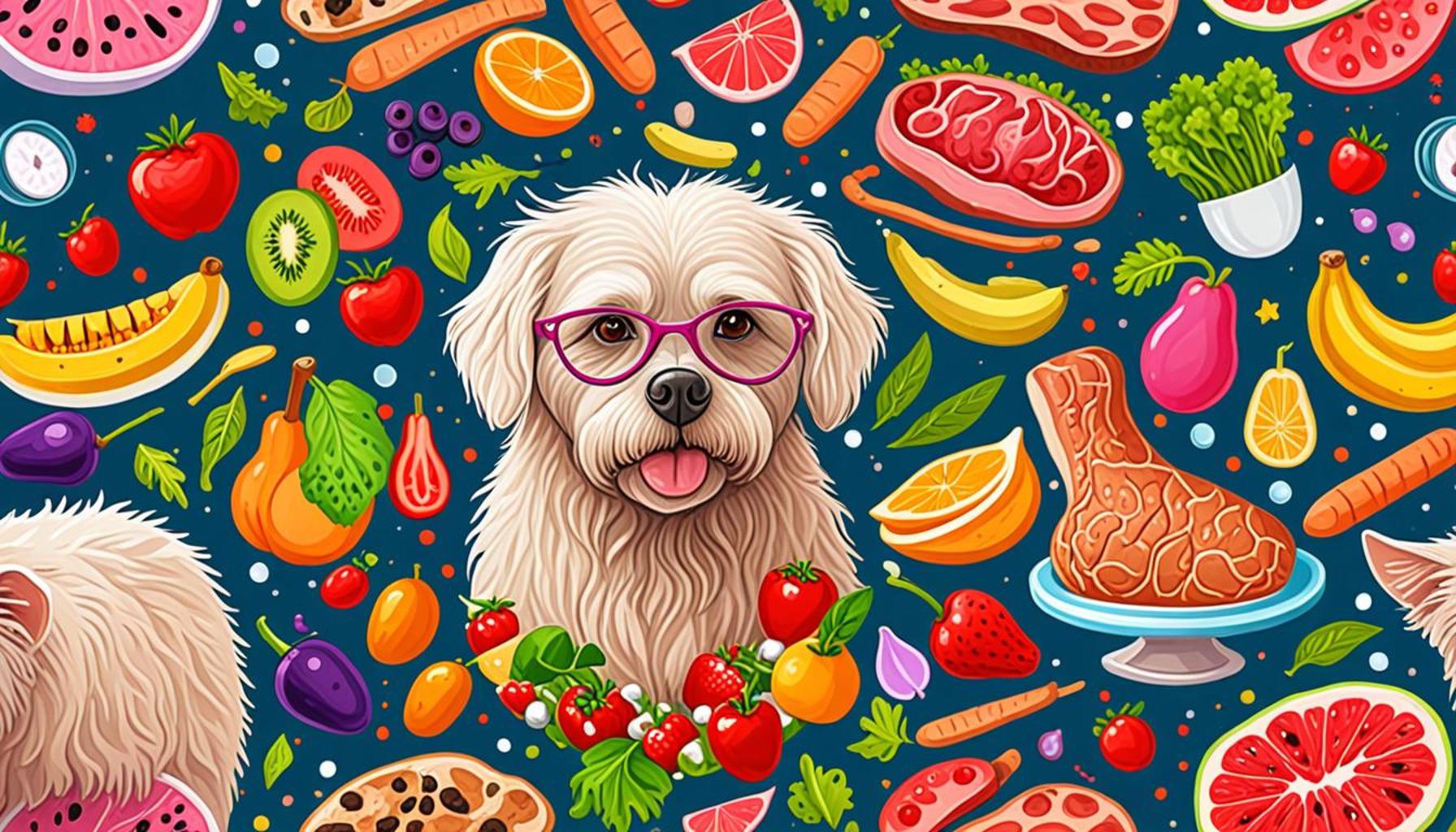The Importance of Hydration in Pet Health: Tips and Recommendations

The Importance of Hydration in Pet Health
When we think of our beloved pets, we often focus on their diets, exercise routines, and regular veterinary check-ups. Yet, one of the most critical aspects of their health—hydration—is frequently overlooked. Water is not only essential for human health; it is equally vital for our furry companions, enabling their bodies to perform numerous crucial functions that contribute to their overall health and well-being.
Why is hydration essential for pets?
Regulates body temperature: Just as humans sweat to cool down, our pets rely on water to help regulate their body temperature. During hot weather or after physical activities like playing fetch, adequate hydration becomes essential to prevent overheating, which can lead to heatstroke, a potentially fatal condition.
Aids digestion: Proper hydration is integral to digestive health. It helps to break down food, absorb nutrients, and move waste through the gastrointestinal tract. A well-hydrated pet is less likely to suffer from constipation, a common issue that can lead to more severe digestive problems.
Supports joint health: Water serves as a lubricant for joints and helps cushion vital organs. This is particularly important for older pets or those with arthritis, as keeping them hydrated can alleviate discomfort and promote mobility.
Eliminates waste effectively: Hydration plays a pivotal role in the urinary system, aiding in the elimination of waste products from the body. A well-hydrated pet is more likely to produce healthy urine, which is crucial for preventing urinary tract issues.

Animals, especially dogs and cats, can become dehydrated quickly, which can lead to serious health issues. Even mild dehydration can affect their energy levels, mood, and coat quality. For example, a dehydrated pet may appear lethargic, feel less playful, or lose the luster in their coat.
Signs of dehydration in pets include:
- Excessive panting: This can indicate that your pet is struggling to regulate their temperature and may be in distress.
- Lethargy or lack of energy: A pet that is unusually tired or disinterested in play could be signaling dehydration.
- Dry gums: Healthy pets should have moist gums; dry ones can be a warning sign of dehydration.
- Loss of elasticity in the skin: A simple skin tent test can indicate hydration levels; if the skin does not quickly return to its position, your pet may be dehydrated.
As responsible pet owners, it is crucial to understand the importance of maintaining proper hydration for our pets. Providing fresh, clean water at all times is essential, especially in warmer months or during vigorous activity. Additionally, incorporating moist foods into their diet, such as wet dog or cat food, can boost their water intake. In the following sections, we will explore expert tips and recommendations to ensure your beloved companions stay well-hydrated and healthy throughout their lives. By staying informed and proactive, we can significantly improve the quality of life for our cherished pets.
DISCOVER: Click here to learn more about the benefits of pet adoption
Understanding the Water Needs of Your Pet
To truly appreciate the importance of hydration in pet health, it is essential to understand the unique water needs of your pet. While the average dog requires about one ounce of water per pound of body weight each day, cats typically need about 5 to 10 ounces daily. However, a pet’s water needs can vary significantly based on factors such as size, age, activity level, and even climate. For instance, a highly active dog in a warm environment may need considerably more water to stay hydrated compared to a sedentary dog living in a cooler climate.
Age is another critical factor. Puppies and kittens often require more water relative to their body weight, particularly because they are growing and their organs are developing. On the other hand, older pets may require special consideration due to potential health issues that can affect their water intake, such as kidney problems or diabetes. Understanding these nuances will enable pet owners to tailor their hydration strategies effectively.
Daily Hydration Requirements Based on Pet Characteristics
- Size: Larger breeds generally need more water, while small breeds may require less. For example, a 50-pound dog may need about 50 ounces of water daily.
- Activity Level: Dogs and cats that lead an active lifestyle will naturally require higher water intake. Regular exercise, especially in warm weather, can rapidly deplete their hydration levels.
- Diet: Pets that consume dry kibble may require additional water compared to those who eat wet food. Wet food can contain up to 80% water, significantly contributing to hydration.
- Health Conditions: Certain medical conditions can affect a pet’s water needs. For example, pets with diabetes often need to drink more to manage their condition, while others with heart disease may require careful monitoring of their fluid intake.
Furthermore, pet owners should also be aware of environmental conditions that can exacerbate dehydration. During the hot summer months or on particularly humid days, pets are at a higher risk for overheating, which increases their need for water. Chronic exposure to heat can lead to heat exhaustion or heat stroke if pets do not have adequate access to fresh, cool water.
Recognizing the signs of dehydration early on is imperative for ensuring your pet’s health. Besides the symptoms mentioned earlier, look out for decreased appetite, sunken eyes, and changes in bathroom habits, such as less frequent urination. If you suspect your pet is dehydrated, it is essential to act quickly—offering small amounts of water frequently can help rehydrate them effectively.
In the upcoming sections, we will delve deeper into practical tips and recommendations to ensure that your pet remains optimally hydrated. From crafting personalized hydration plans to fun ways to encourage water consumption, there are numerous strategies you can employ. Keep reading to discover how to make hydration a priority in your pet’s daily care and ultimately enhance their overall health and vitality.
The Importance of Hydration in Pet Health: Tips and Recommendations
Ensuring that your furry companions stay hydrated is not just a matter of comfort; it’s a crucial aspect of their overall health and well-being. Just like humans, pets can suffer from dehydration, which can lead to severe health problems. Here, we explore some critical aspects of pet hydration to enhance your pet’s life.
One significant factor to consider is the impact of hydration on digestion. Water helps in the absorption of nutrients and the functioning of vital organs, including the digestive system. Without adequate hydration, your pet may struggle with constipation or other gastrointestinal issues. Additionally, maintaining proper water intake can help prevent urinary tract infections and kidney problems, which are prevalent in many pets.
Moreover, hydration plays a vital role in regulating body temperature. Pets, particularly those with thick fur or brachycephalic breeds, can be prone to overheating. Proper hydration enables pets to sweat effectively and maintain a stable temperature, especially during hot weather or vigorous exercise. As temperatures rise, ensure your pet has accessible fresh water and consider offering ice cubes or ice chips to liven up their hydration routine.
To further understand the advantages of staying hydrated and improve your pet’s overall health, let’s take a look at the following table:
| Hydration Aspect | Benefits |
|---|---|
| Digestive Health | Promotes nutrient absorption; helps prevent gastrointestinal issues. |
| Temperature Regulation | Helps maintain stable body temperature; prevents overheating during warm weather. |
These insights underscore the necessity of monitoring your pet’s hydration levels and offers a basis for integrating effective hydration strategies into their daily routine. Whether through regular water checks, introducing hydration enhancers like wet food, or investing in a pet water fountain, each step you take can significantly enhance your pet’s hydration and health.
As pet owners, it’s our responsibility to ensure that hydration remains a priority. Stay informed about your pet’s hydration needs and adapt accordingly to foster a healthier and happier life for your beloved companions.
LEARN MORE: Click here for effective training tips
Practical Strategies for Encouraging Pet Hydration
Now that we understand the importance of hydration and the various factors affecting your pet’s water needs, it’s time to explore practical strategies for encouraging optimal water intake. Maintaining adequate hydration can be one of the simplest yet most effective ways to ensure your pets lead long, healthy lives.
Creating a Comfortable Watering Environment
One significant aspect of ensuring your pet drinks enough water is the environment in which their water is provided. Location matters; the water bowl should be placed in a quiet, accessible spot, away from food and frequently visited areas that might cause distractions. If your pet feels stressed or overwhelmed, they may be less inclined to drink.
Moreover, the type of bowl can influence your pet’s hydration habits. Stainless steel or ceramic bowls are often preferred as they are non-toxic, sturdy, and less prone to harboring bacteria compared to plastic bowls. Consider also the size and depth of the bowl; some pets may feel more comfortable drinking from shallow dishes or those that are easy to access. Automatic water dispensers, which keep water flowing and fresh, can also encourage pets to drink more.
Flavoring Water for Increased Appeal
Sometimes the key to getting your pet to drink more lies in enhancing the appeal of plain water. Adding low-sodium chicken or beef broth can entice even the fussiest drinkers to hydrate. Just remember to select broths that do not contain onions or garlic, which are toxic to pets. For cats, adding a few ice cubes can make water more interesting, as the sound and movement stimulate their curiosity.
Incorporating Hydration into Meals
Offering wet food is not just a strategy for cats; it’s also a viable option for dogs. Wet food typically contains about 70-80% water, significantly reducing the extra intake required. For those who prefer dry kibble, consider mixing in some water or broth to create a tasty, hydrating meal. Additionally, frozen treats made with blended fruits or low-sodium broth can be a refreshing way to help your pet cool off while hydrating.
Monitoring Hydration Levels
Keeping an eye on your pet’s water intake can be pivotal in preventing dehydration. There are a few ways to monitor their hydration status—one effective method is the skin elasticity test. By gently pinching the skin on the back of your pet’s neck, it should return to its original position promptly. If it takes time to return, your pet may be dehydrated. Additionally, pay attention to the frequency of urination. If your pet consistently has a dry mouth or shows less interest in drinking, consider consulting a veterinarian for further evaluation.
Using Technology to Your Advantage
In today’s tech-savvy world, there are several smart solutions for enhancing your pet’s hydration efforts. Water fountains equipped with filtration systems not only keep the water moving but can also remove impurities that may deter your pet from drinking. Some pet owners have reported that their animals show increased interest in drinking water when it flows continuously. Moreover, technology apps and pet monitors can help track your pet’s daily water intake, alerting you to any abnormalities that require attention.
By leveraging these practical strategies, pet owners can ensure their furry companions stay hydrated and maintain optimum health. The journey to encouraging proper hydration provides an opportunity to observe and nurture your pet’s specific needs, ultimately leading to a happier and healthier life together. Keep reading to uncover even more insights into the magical world of hydration for pets as we move forward into additional tips and recommendations.
DISCOVER MORE: Click here to learn how pet adoption services are shaping our communities
Conclusion: The Vital Role of Hydration in Your Pet’s Well-Being
In summary, hydration is a cornerstone of pet health, influencing everything from organ function to overall vitality. As pet owners, it is our responsibility to recognize the signs of dehydration and actively facilitate adequate fluid intake for our furry companions. By creating a pleasant drinking environment and engaging their senses through flavorful water options and interactive feeding methods, we can transform hydration into an enjoyable experience for our pets.
Moreover, regular monitoring of hydration levels and incorporating technology can further empower us to track our pets’ needs effectively. Given that pets, much like humans, can suffer serious health consequences if hydration is neglected, we must prioritize their water consumption as an essential aspect of their daily care.
As you embark on this journey of enhancing your pet’s hydration habits, remember that every small change can lead to a significant impact. Stay vigilant, open to experimentation, and willing to adapt to your pet’s unique preferences. In doing so, you not only support their physical health but also foster a deeper bond based on attentiveness and care.
Ultimately, championing hydration will play a pivotal role in ensuring your beloved pet lives a long, happy, and healthy life. For further insights and specialized advice tailored to your pet’s specific needs, consider consulting a veterinarian who can provide more detailed recommendations. Together, let’s make hydration a fundamental priority in the mission of nurturing our cherished companions.


